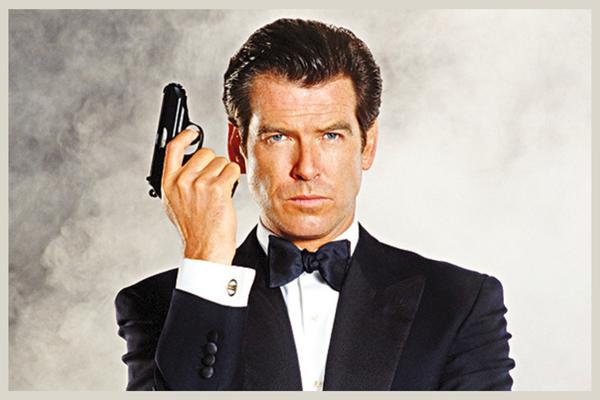The Walther PPK – James Bond’s Weapon of Choice
In the world of firearms, certain designs stand the test of time, transcending fleeting trends to etch a permanent mark in history. Among these iconic designs, Walther’s PPK emerges as a pinnacle of innovation, seamlessly combining functionality with finesse.
Over eight decades ago, this groundbreaking weapon not only redefined the standards for concealed carry pistols but also became an enduring symbol of style, precision, and reliability. As it emerged from the holster of the suave and relentless spy, James Bond, the PPK transformed from a mere firearm to a cultural icon.
Its sleek appearance and unmatched performance, makes it not just a weapon of choice for James Bond, but also a representation of timelessness in firearm engineering.
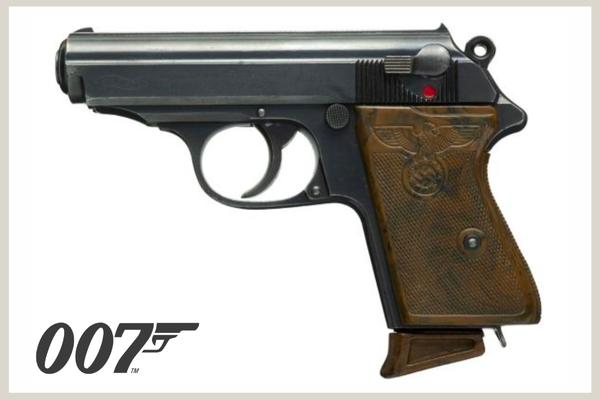
It’s an iconic gun, but it only made it into the historical chronicles of Bond thanks to Geoffrey Boothroyd an avid fan of the early novels. The weapons expert wrote to Fleming criticising his selection of a .25 calibre Beretta and recommending instead the iconic PPK. The rest is history.
>> Get the US version of the famous firearm: The PPK/S <<
The Walther PPK Background and Design
The Police Pistol Kriminal, commonly known as the PPK, holds a distinctive place in the annals of firearm industry. Introduced by the legendary German arms manufacturer, Walther, this pioneering pistol sought to break the mold and set new benchmarks in personal defense weaponry.
One of the PPK’s most groundbreaking features was its unique blend of concealability and power. Unlike many other firearms of its era, the Walther PPK was designed to be both compact and potent, allowing for discreet carry without compromising on the efficacy of the weapon. This became a game-changer, especially for undercover officers and private citizens seeking a reliable defense tool that wouldn’t draw undue attention.
Another innovative feature of the PPK was its double-action/single-action trigger mechanism. This allowed the shooter to fire the first round in a long-pull double-action mode and subsequent shots in a short-pull single-action mode, offering both safety and rapid fire capability.
The PPK was also one of the first pistols to introduce the decocker, a mechanism that safely deactivates a cocked hammer without firing the gun, enhancing its safety features and ease of use.
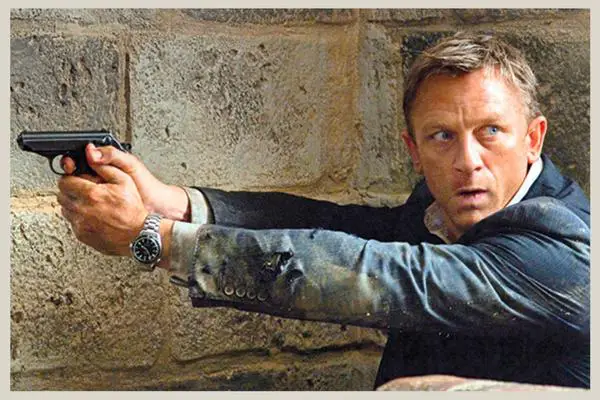
As decades passed, the Walther PPK didn’t just survive but thrived. Its smart design and unparalleled performance ensured its continued popularity, with both professionals and enthusiasts alike.
From its inception, the famous firearm became an emblem of craftsmanship, innovation, and enduring legacy. Even today, as more advanced weaponry floods the market, the PPK stands tall, a testament to its timeless design and the vision of its creators.
Historical and Cultural Significance
The Walther PPK, beyond its technical achievements, has left an indelible mark on world history and popular culture. Its intricate design and reliable functionality have made it the choice of weapon in various pivotal moments, some of which have altered the course of nations.
One of the most notorious uses of the PPK was in the closing days of World War II. As Allied forces closed in on Berlin, Adolf Hitler, the architect of the Nazi regime, took his own life using a PPK chambered in .32 ACP, leaving behind a world scarred by war and genocide.
In a different part of the world, decades later, the PPK was again at the center of a political storm. The gun was used in the assassination of South Korean leader Park Chung-hee. His death brought forth a period of political instability, reshaping the trajectory of the Korean Peninsula.
Even the British monarchy wasn’t untouched by the presence of the Walther PPK. In a dramatic kidnapping attempt on Princess Anne, the personal police officer assigned for her protection, James Beaton, attempted to defend the princess using a PPK. However, in a cruel twist of fate, the weapon jammed, adding a layer of infamy to the firearm’s history.
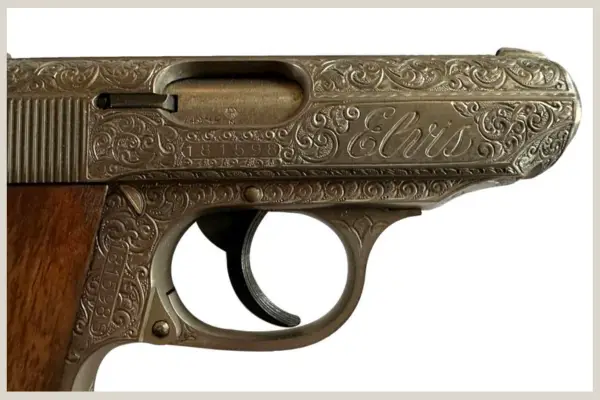
In the realm of popular culture, the PPK has enjoyed a more glamorous reputation. The King of Rock ‘n’ Roll, Elvis Presley, had a fondness for the firearm. He owned a silver-finish PPK inscribed with “TCB” which stands for “taking care of business”. The firearm was auctioned off in 2015, selling for $96,000.
In essence, the Walther PPK, throughout its existence, has been intertwined with moments of profound significance, from political upheavals to pop culture milestones, establishing it as more than just a firearm, but a relic of human history.
James Bond’s Affair with the Walther PPK
James Bond is synonymous with stylish cars, shaken martinis, and of course, his trusty sidearms. Among the most iconic of these is the Walther PPK, which has become as much a part of Bond’s identity as his code number, 007.
The story starts with Dr. No, the sixth novel that first saw 007 equipped with the now-iconic PPK. Prior to this, Bond had been wielding a .25 caliber Beretta 418. But author Ian Fleming, who took great care in detailing the various tools of Bond’s trade, was about to be presented with a professional critique that would forever change the course of Bond’s literary (and later cinematic) arsenal.
Enter Geoffrey Boothroyd, a knowledgeable and passionate gun enthusiast and Bond fan. He reached out to Fleming with a critique. The Beretta, in his opinion, was a lady’s gun, not befitting a man of Bond’s stature and profession.
>> Get the US version of the famous firearm: The PPK/S <<
Boothroyd’s recommendation was unequivocal: the Walther PPK. Compact, reliable, and with enough stopping power, it was perfect for a spy often in close-quarters combat situations.
Grateful for the expert advice, Fleming not only made the change in his novels but also honored Boothroyd by immortalizing him as the character Major Boothroyd, better known to movie audiences as Q.
On the silver screen, the transition was dramatized in the first film Dr. No. Early in the movie, Bond is instructed to relinquish his beloved Beretta in favor of the Walther PPK, a change he was initially reluctant about but soon grew to appreciate.
From that point on, the PPK became Bond’s primary weapon of choice in film after film, forming an integral part of the Bond mystique. Its sleek design and compact form made it the perfect companion for Bond’s tuxedo-clad adventures.
However, just as with all things, change was inevitable. By the time Tomorrow Never Dies hit the screens, the world of espionage had changed, necessitating an upgrade in Bond’s arsenal. Enter the Walther P99, a modern, larger, and more versatile pistol. For a time, it seemed the PPK had been retired for good.
But old habits die hard. The PPK, with its storied history and iconic status, made a triumphant return in Quantum of Solace and has since remained Bond’s trusty firearm since.
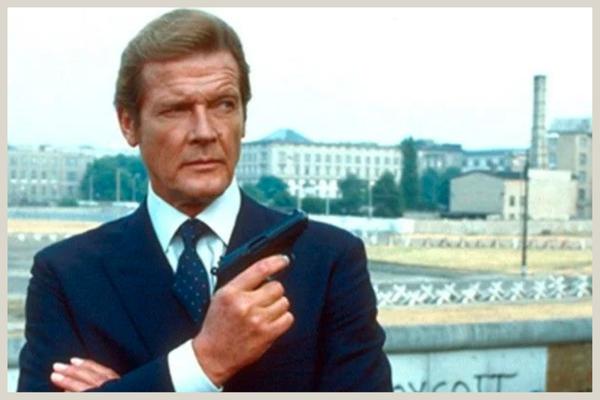
James Bond and The Walther PPK – Made for Each Other
The Walther PPK, a compact and elegant firearm, has etched its name the annals of gunsmithing craftsmanship. And when one thinks of the Walther PPK, it’s near impossible to disentangle it from its most famous fictional user: James Bond.
This association has cemented the PPK’s place in the pantheon of iconic cultural symbols. But the legacy of the PPK goes beyond its ties to 007. Playing a key role in major historical events and other facets of entertainment, showcases the extent of its influence.
But of course, its popularity isn’t just rooted in its famed associations. The PPK’s meticulously crafted design combined with its unparalleled functionality underscores why it remains a top choice for gun enthusiasts and professionals alike.
The firearm’s blend of elegance, compactness, and reliability has set a gold standard in the world of concealed carry pistols. After all, it wouldn’t be the weapon of choice for James Bond if it were anything less than exceptional.


